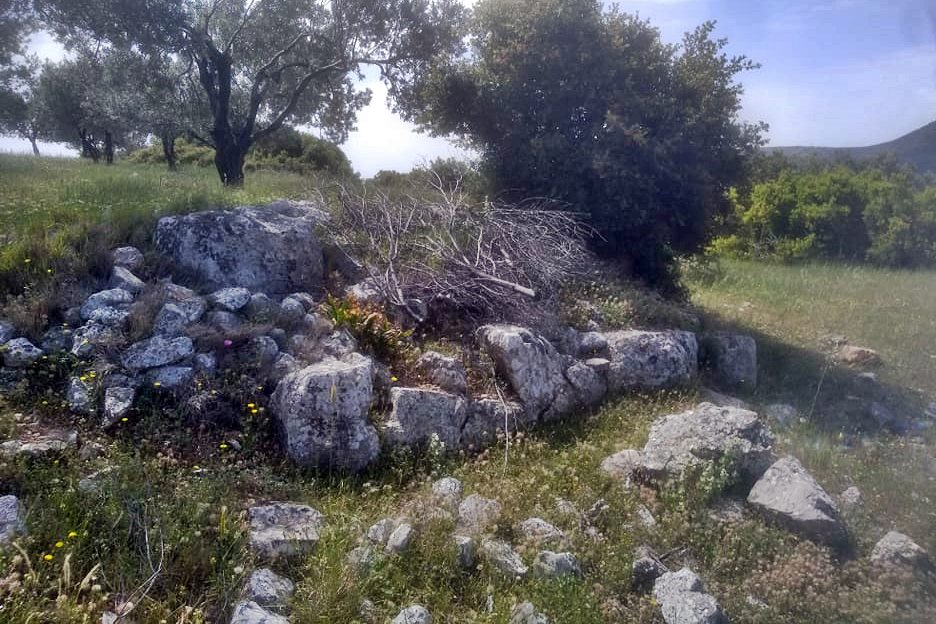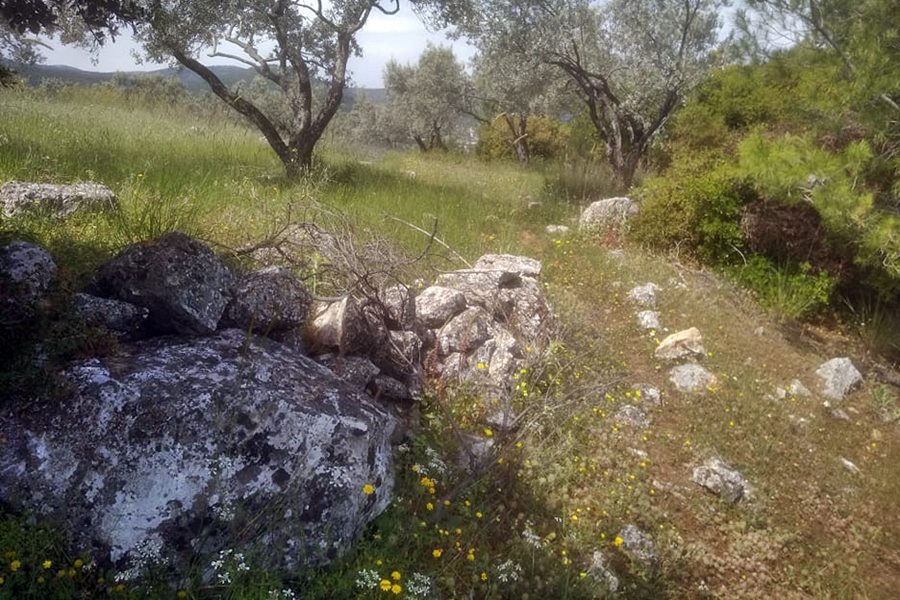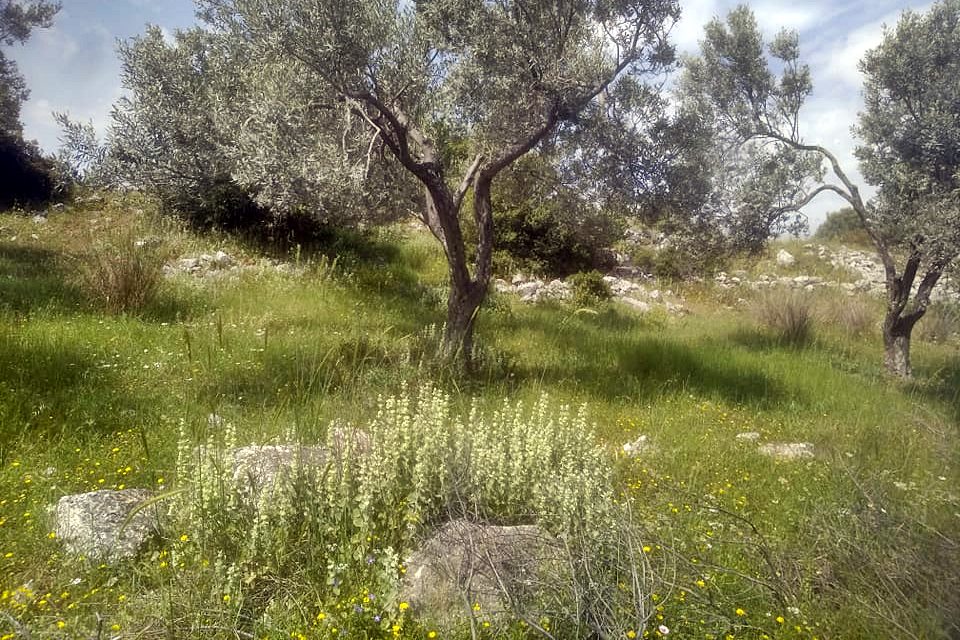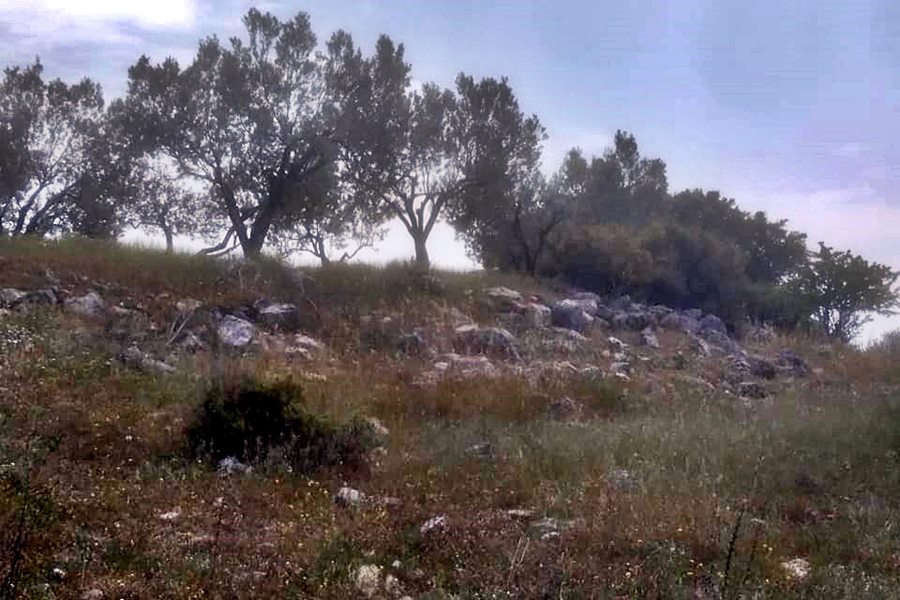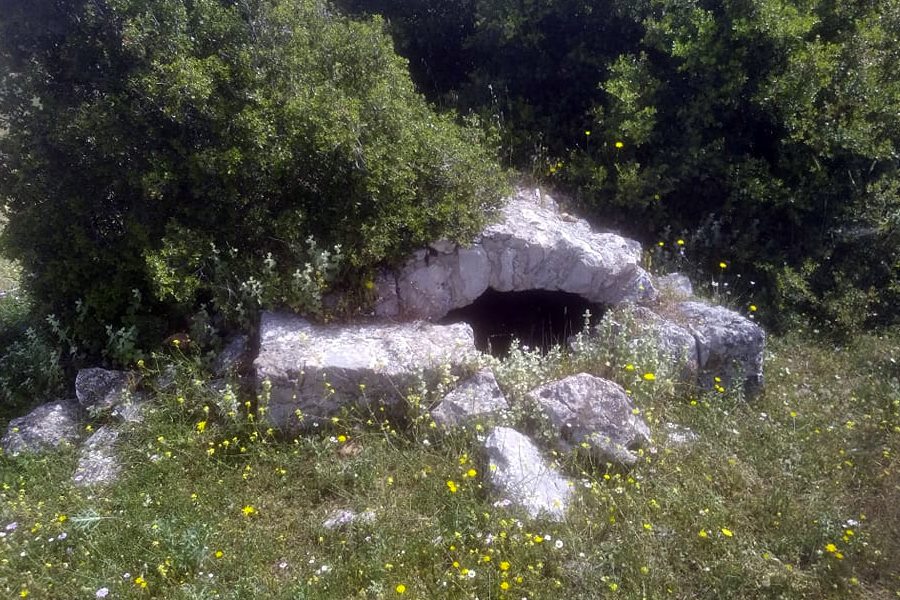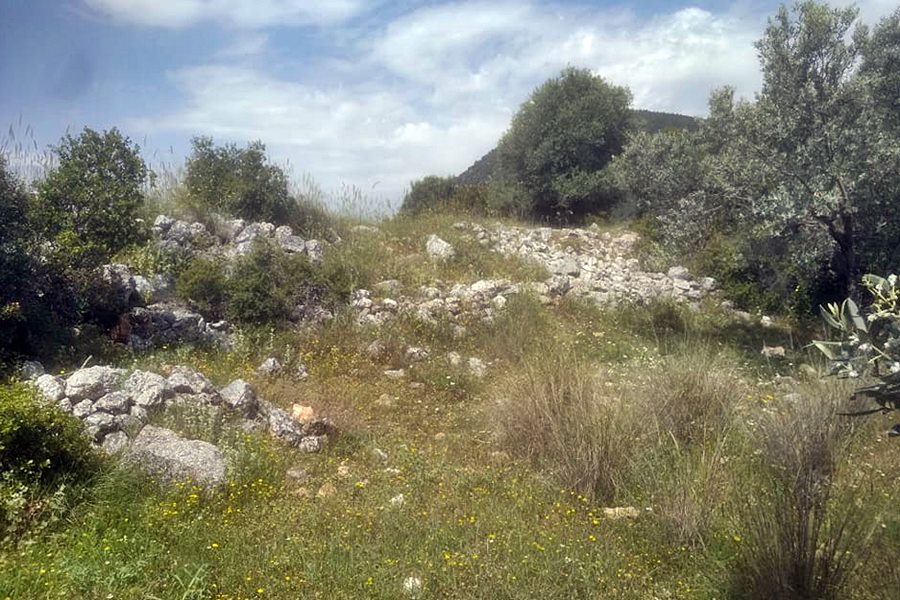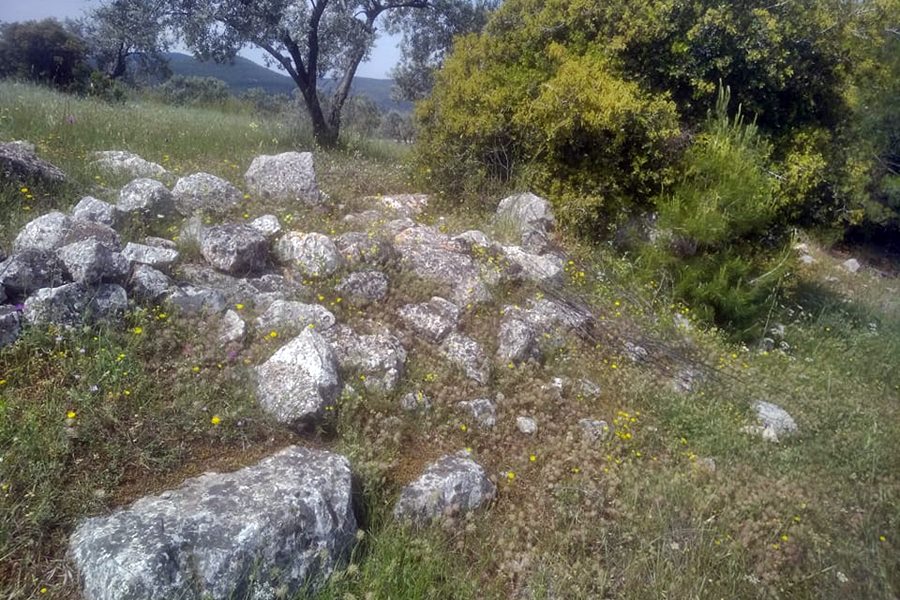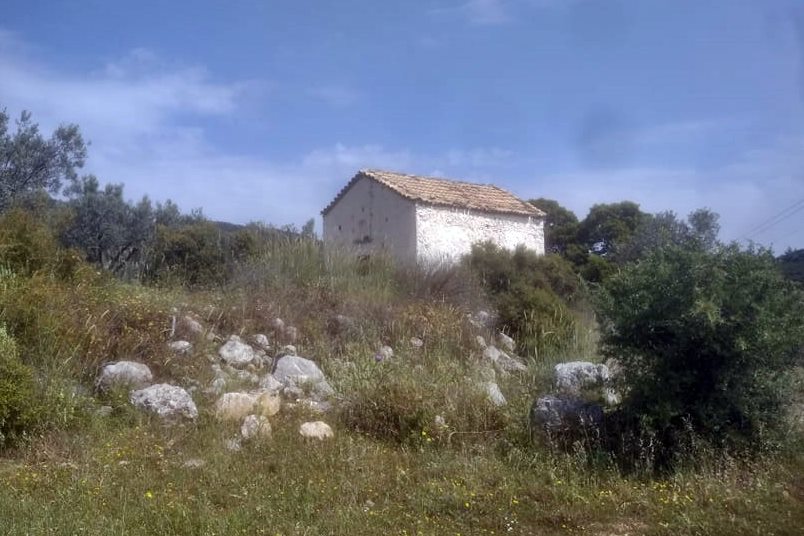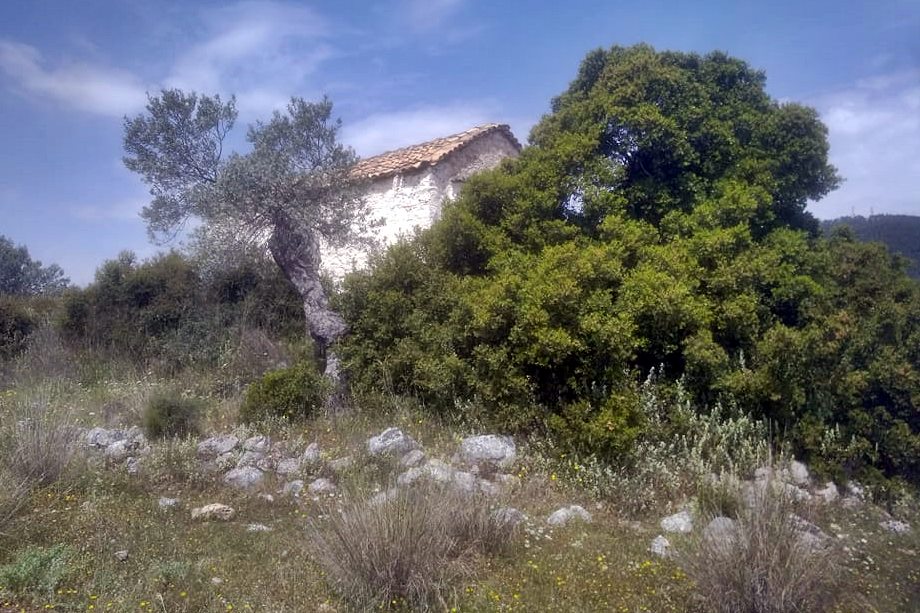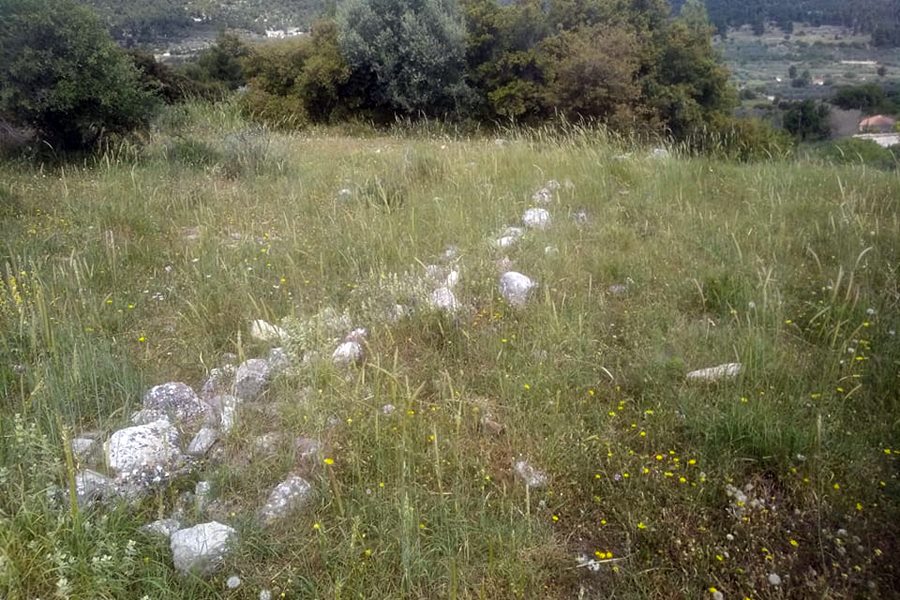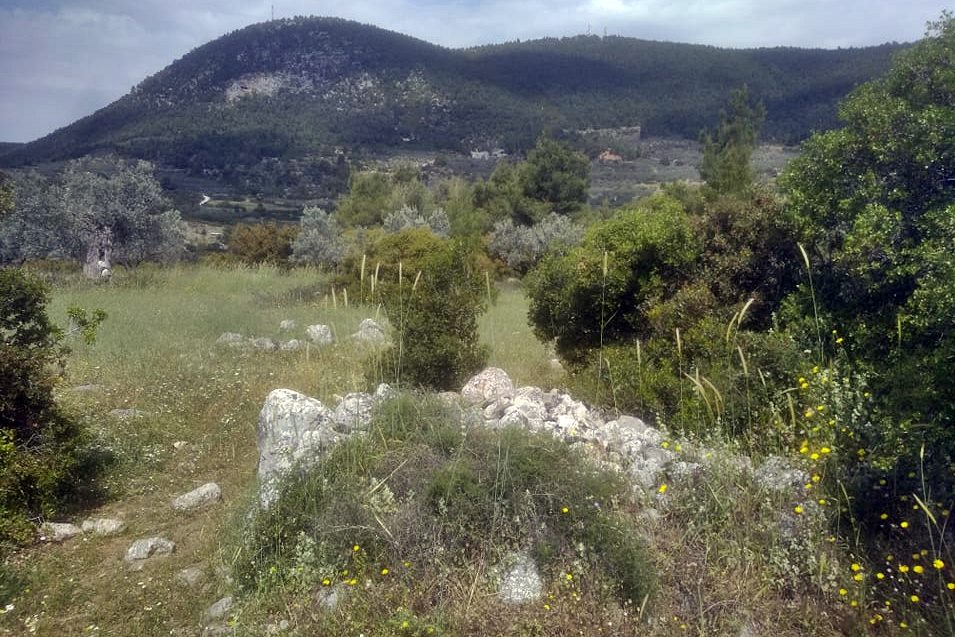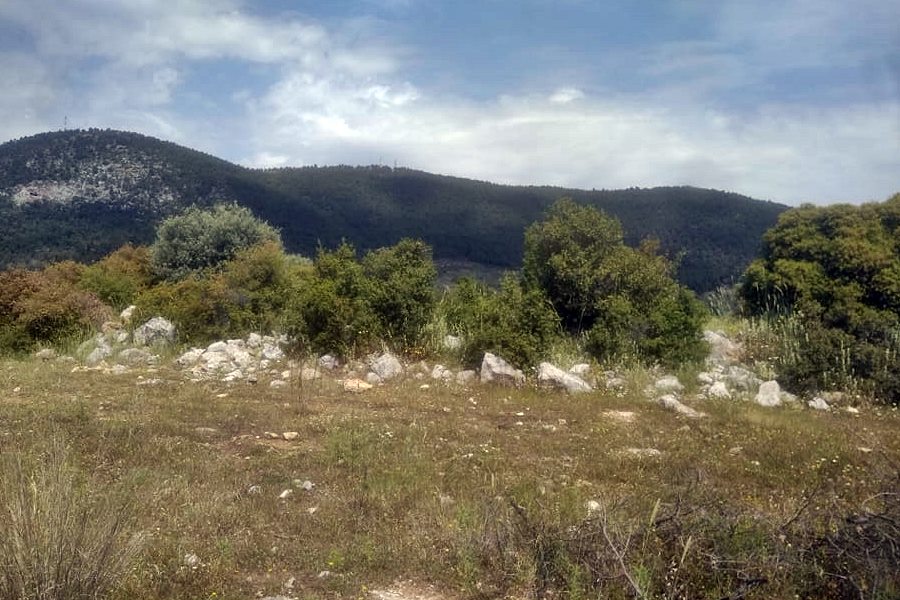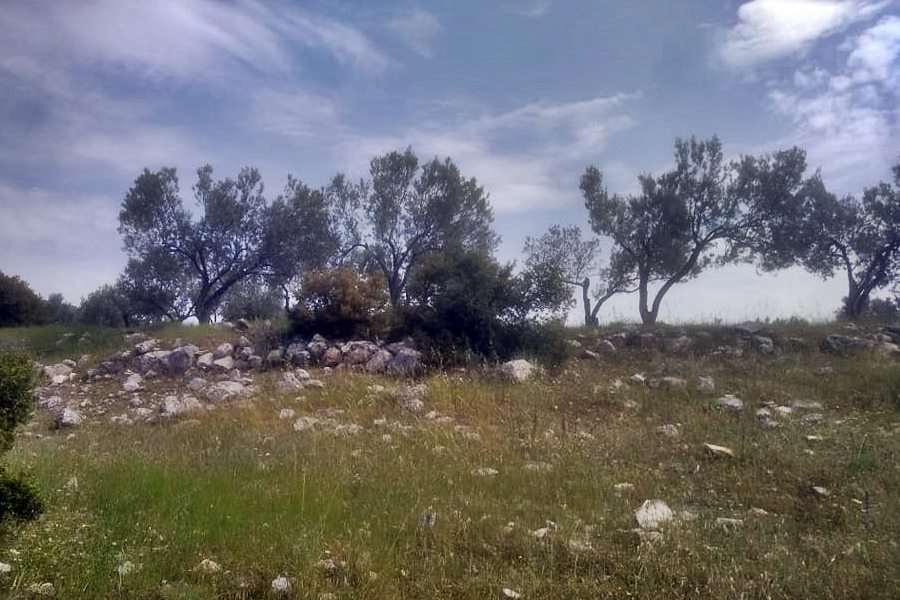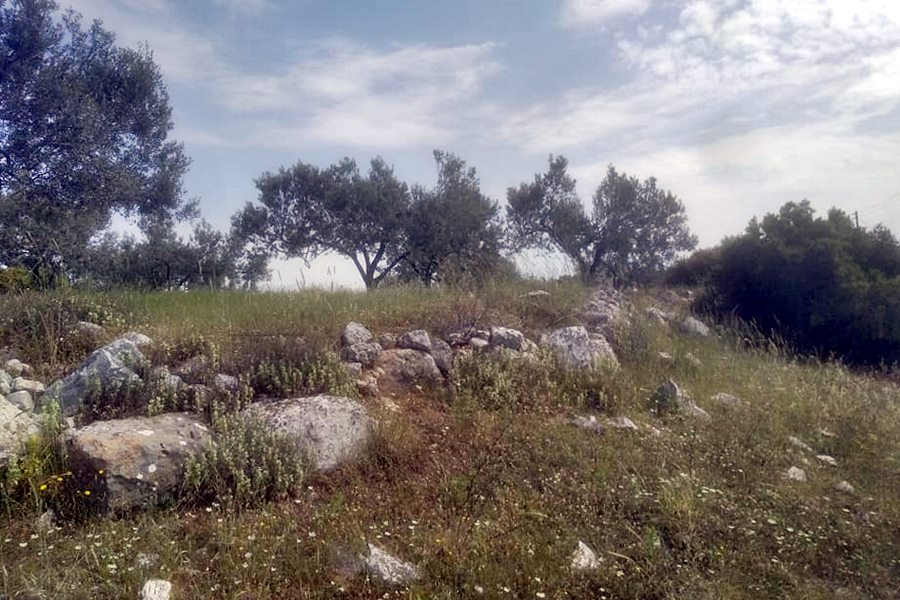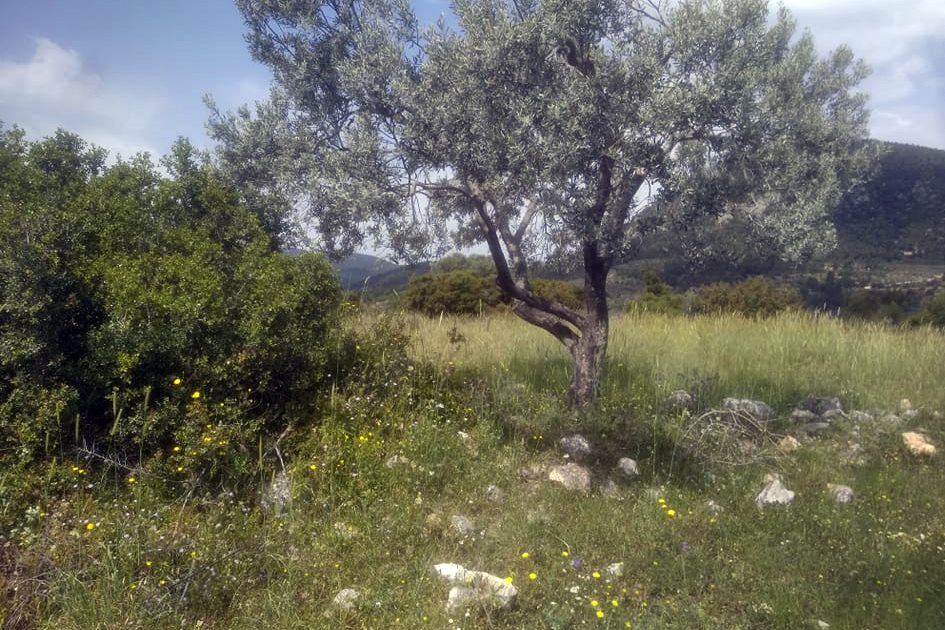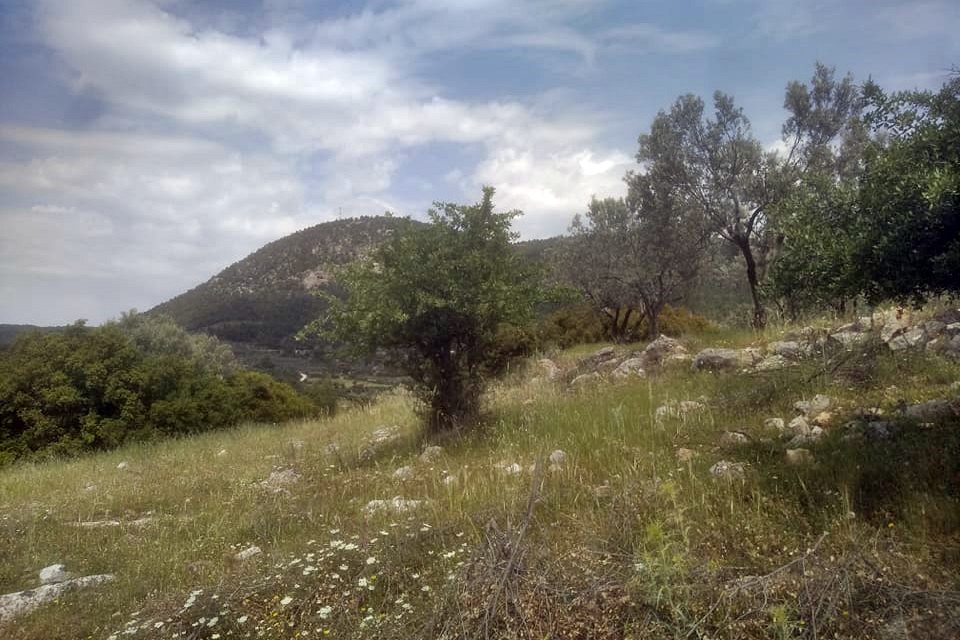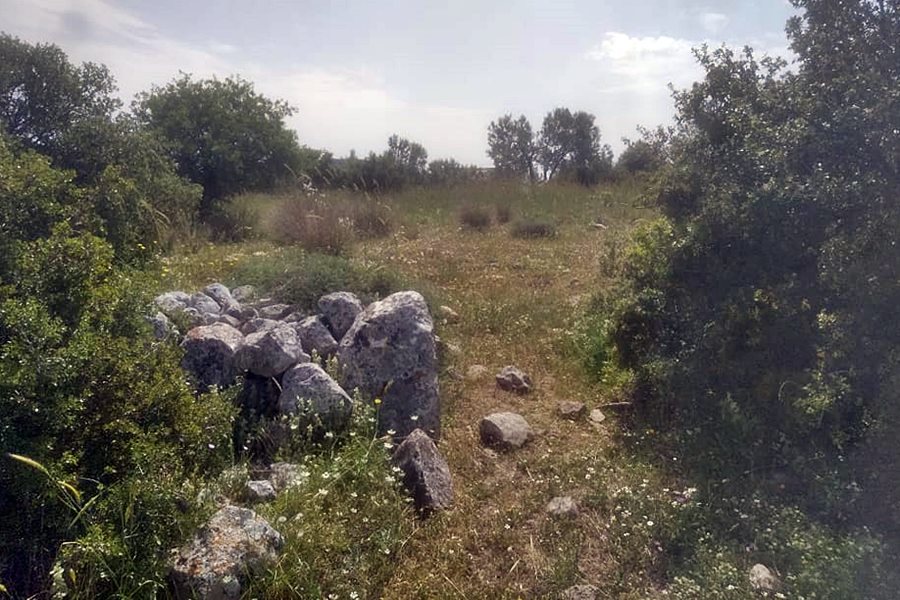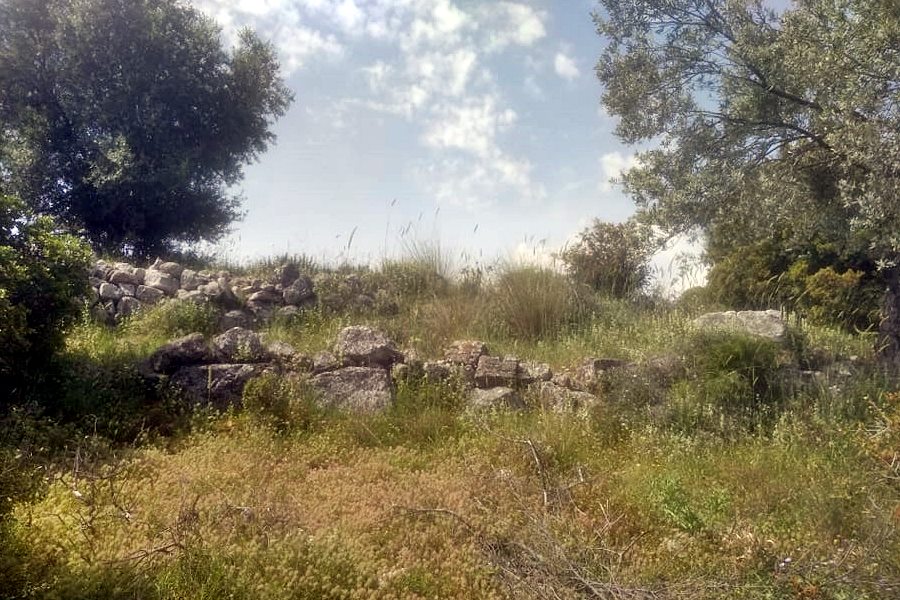Sophiko, Corinth, Corinthia,Peloponnese
Fort of Zarakas
| Location: |
| East of the village Sofiko in Corinth region, on a low hill with a chapel of Agia Paraskevi |
| Region > Prefecture: | 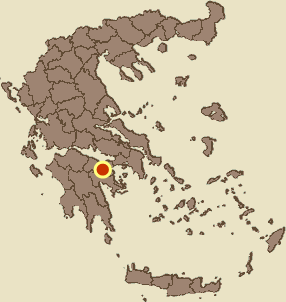 |
| Peloponnese Corinthia | |
| Municipality > Town: | |
| City of Corinth • Sophiko | |
| Altitude: | |
|
Elevation ≈ 430 m (Relative Height≈40 m) |
| Time of Construction | Origin | |
| various periods | FRANKISH |
|
| Castle Type | Condition | |
| Castle Ruins |
In Ruins
|
Few and scattered remains of a fortification on a low and smooth hill east of the town Sofiko, SE of Corinth, in Peloponnese.
The place is named “Zarakas” on a Venetian map. A small church of Agia Paraskevi is located in the eastern corner of the fortification, inside the walls.
At the northern foot of the hill is the Monastery of Panagia.
History
There are phases of the ancient classical period in the SE corner, while there is probably also a Byzantine phase. The newest phase must be of the Frangokratia, and judging by the dry stone construction, it is a fortification of the 13th century, when the area belonged to the Duchy of Athens and the De La Roche family.
Structure, Fortification & Buildings
The fortification covers an area of about 7,000 sq.m. There are two parts: outer courtyard and inner courtyard or citadel (see the layout). On the east side, near the chapel, there is a vaulted cistern.
The entrance to the outer courtyard is on the west side. For the citadel, there are two entrances, from the south and from the west.
According to Peppas (1990), the walls are made of dry stone with a thickness ranging from 1.10 meters to 2.20 meters. There are phases of the ancient classical period in the SE corner, while there is probably also a Byzantine phase. The newest phase must be of the Frangokratia.
| First entry in Kastrologos: | May 2022 |
Sources
- Research and pictures by Aris Tax (2022)
- Ι.Ε. Πέππας, Μεσαιωνικές σελίδες της Αργολίδας, Αρκαδίας, Κορινθίας, Αττικής, Αθήνα 1990, σ.136,137
|
|
| Access |
|---|
| Entrance: |
| Free access |
| Similar |
|---|
| Castle of Alataria |
| Castle of Mount Escouve |
| Gyclos Fort |
| Larisi castle |
| Fort of Perama |



